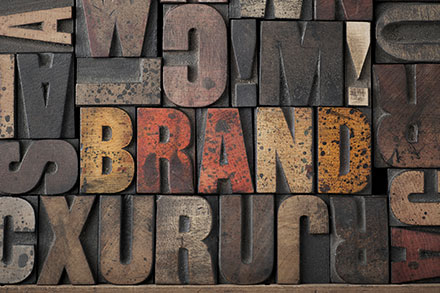What to Expect on Your Branding Journey
Learn about the basic steps in a typical branding process.

Brand development is a journey, and having a clear process ensures you stay on course. Though each branding challenge is unique, following a proven design-thinking approach helps uncover what will emotionally connect with your customers.
Do your research
Start by gathering what you know and discovering what you don’t through research.
- Background review: Collect and organize your brand history and current position in the marketplace for the team.
- External input: Gather insights from clients, employees, and partners about what sets you apart through surveys or interviews. They know why they spend their money on your product or service—and hearing their voices is valuable.
- Brand audit: Evaluate your current brand across all channels—are there gaps or missed opportunities? Lack of consistency? Not as sophisticated as your competitors?
- Marketplace review: Analyze your competitors to identify trends, opportunities, and areas where your brand can stand out.
- Ideation: Collaborate with internal teams to explore ideas and determine how to evolve the brand. This helps build internal advocacy and alignment.
Build a strategy and a voice
Next, distill down all the information you’ve gathered with a discerning eye to find the patterns and elevate the key points. This can be the most difficult step but doing it right will give you a foundation to grow your brand.
- Brand strategy: Compile your research findings and determine how you can strategically differentiate your brand and connect emotionally with audiences.
- Message platform and story: Create a brand story and message platform, including value proposition, points of difference, and targeted messages for specific audiences.
Make it visual
Now it’s time to apply your strategy and story visually. Find ways to bring in elements of your story to connect with customers on an emotional level.
- Logo design: Assess if your logo aligns with the new strategy. Is it working functionally and aesthetically? Update if needed.
- Visual system: Develop or refine your visual elements—color palette, typography, and other design assets. Ensure they work across different touchpoints and channels.
Implement and document
This is where you prove all your work to this point. Does it work in real life? Documenting what you have built will ensure the consistency you need to keep a brand on track.
- Templates and tools: Apply the new message platform and visual system to customer touchpoints and make sure the team has access and training.
- Brand guidelines: Create a document with your verbal and visual standards to maintain consistency and build brand momentum. Use this when onboarding new employees to create brand advocates as well as a guide for internal and external marketing staff.
Share it with the world
A new brand signifies a change in your organization. Use this opportunity to explain the benefits of that change to your internal and external audiences.
- Brand launch: Make a plan to launch the brand to your employees first and then the world.
- Ongoing updates: Branding evolves. Stay agile by adjusting to market conditions and new channels while maintaining a solid foundation.
5 Tips to Navigate the Politics of a Brand Update
Master the politics of rebranding.
When Do You Need to Rebrand?
A few clues to let you know when it’s time to refresh your brand.
5 Signals Your Brand is Ready for Growth
How to know when it’s time to level up.



